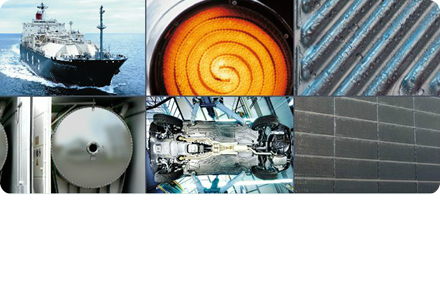Protection of the air
The prevention of air pollution has become one of the most challenging environmental issues facing mankind. The effect of increased levels of “greenhouse gases” on climate change is perhaps the most topical example, but pollutants such as sulphur dioxide, a major cause of “acid rain”, and fine particulates with their implications for human health, are others worthy of note.
Many of the new technologies used to limit harmful emissions to the atmosphere involve the formation of condensates which, at the same time, help to minimise energy losses. Such condensates, however, are usually highly corrosive to metals and alloys. It is primarily because of their superior resistance to heat and corrosion, that stainless steels and other iron-chromium- nickel alloys are used in such instances. A couple of examples will clearly illustrate this trend: Flue gas desulphurisation units fitted to coal-burning power stations or Condensing boilers which lead to more efficient use of the energy from fossil fuels. “Low Carbon” or “Zero Carbon” technologies are expected to gain prominence in the future, and many of these also benefit from the special properties of stainless steels. Nuclear power installations provide an excellent example, in which these materials are used not only in the core of the reactor itself, but in cooling installations used for the safe long-term storage of radio-active waste products. This section of the library features these and many other examples of the ways in which stainless steel can help to protect the air around us.

